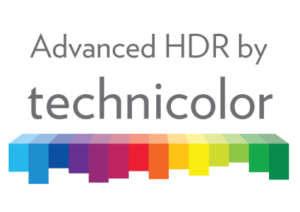Advanced HDR by Technicolor Offers Path to Enhancing Productions
Significant new developments in the conversion of standard dynamic range (SDR) content libraries to high dynamic range (HDR) along with the distribution of live broadcasts — especially sports — are opening new frontiers of opportunity for the entertainment technology industry.
So say Marty Gordon, VP of brand partnerships at Philips, and Nick Mitchell, media solutions specialist with InterDigital in a podcast interview for journalists held during the HPA 2023 Tech Retreat in Palm Springs, Calif.
HDR, explains Gordon, is making rapid progress in replacing legacy SDR as the next generation of TVs, streaming services and broadcast technologies enter the market.
“HDR is already a mainstream element in the development of episodic and cinematic productions, which is why analysts at Allied Market Research are projecting that the high dynamic range market will reach $126.74 billion (US) by 2030,” Gordon said. “High dynamic range — and many of the immersive formats we’re seeing emerge in the industry — amplify the creative palette. This ultimately results in a more immersive and impactful experience.”
 HDR specifically enables a broader range of colors and brightness offering new ways to control the viewing experience much more succinctly on screen. This means the contrast between the darkest darks and the brightest whites delivers a more lifelike, vibrant image. The greater nuance in bright and dark shades helps preserve detail, so the experience is far more immersive, engaging and life-like for consumers.
HDR specifically enables a broader range of colors and brightness offering new ways to control the viewing experience much more succinctly on screen. This means the contrast between the darkest darks and the brightest whites delivers a more lifelike, vibrant image. The greater nuance in bright and dark shades helps preserve detail, so the experience is far more immersive, engaging and life-like for consumers.
“For consumers, HDR absolutely provides a point of differentiation. When it comes to HDR, seeing really is believing. Once consumers experience HDR, it is very difficult for them to go back to standard dynamic range. Today, more and more consumers are hungry for premium in-home entertainment experiences, and HDR is increasingly seen by consumers as integral to meeting their growing expectations,” Mitchell said.
A technically elegant and cost-effective path to HDR
The key question on the minds of the entertainment technology ecosystem — across the spectrum of content production, distribution, and consumption — is how to manage the transition from today’s complex environment to an all-HDR future in a creatively faithful, technically viable and economically rational manner.
“It is important to understand the available content and the devices content providers and developers want to target. For studios with large libraries of material, ensuring that an HDR grade is available on all the content in their portfolios can be incredibly costly and time-consuming if it is not approached in a strategic manner,” Mitchell said.
Another critical factor to consider while conducting these conversions is the ability to preserve the creative intent of the content. This is always important when dealing with content libraries. But it is also critical as the business models for digital entertainment distribution evolve.
“For instance, if the conversions from SDR to HDR are being performed in the context of advertising supported delivery environments, it is critical to take into account the intent of brands or advertisers who may play a role in the financing or the budgeting of that content,” he said.
Putting advanced HDR by Technicolor into context
Advanced HDR by Technicolor, which features a unique intelligent tone management (ITM) toolset, enables high quality, dynamic, and real-time expansion of standard dynamic range to high dynamic range that preserves that creative and brand intent.
“Known as the SL-HDR format in the technical and standards-setting communities, Advanced HDR by Technicolor provides broadcasters and distributors with a single inventory distribution format to serve both SDR and HDR devices without any creative compromises. It saves infrastructure and delivery costs along the way,” Mitchell said.
The single stream production and distribution features of Advanced HDR by Technicolor make it a cost-effective solution for ensuring that the highest quality productions maintain their integrity across today’s heterogeneous SDR/HDR environment.
“During HPA we are planning to have conversations with streamers, advertisers — really anybody that is using streaming technology — to help people understand where Advanced HDR by Technicolor can be put into place to enhance the services they offer and the value they deliver to consumers around the world. It’s important for leaders in the creative community to understand that HDR is an entertainment technology that will elevate value delivered to consumers in a cost-effective manner,” Mitchell said.
To learn more, click here https://bit.ly/QA-NickMitchell .
